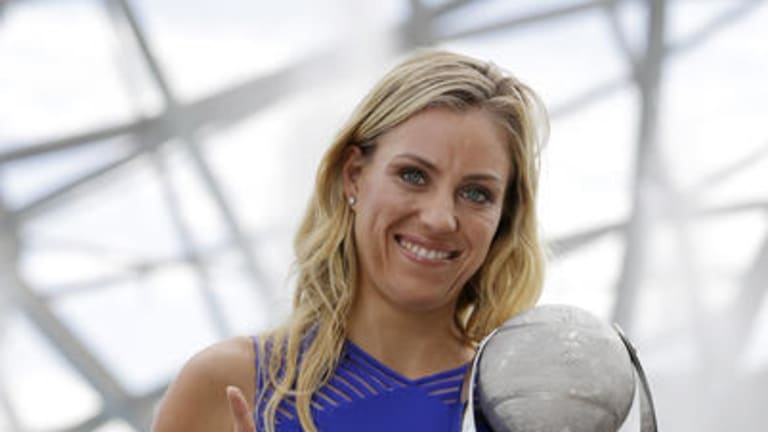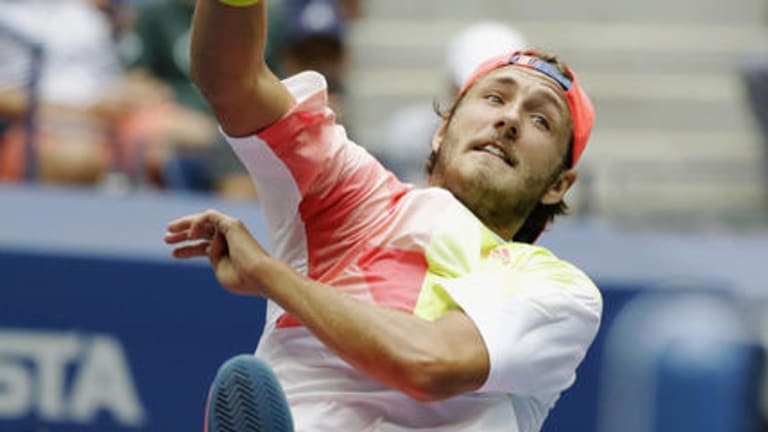Should we be surprised by Kerber’s rise to No. 1, and her second major title? Yes. Should we be stunned? No. She has always been a world-class athlete, but as a tennis player she was defensive-minded. In women’s tennis, defense doesn’t win you big championships, the way it does in football. Kerber found that out again in the Olympic gold-medal match and the Cincinnati final; both times she let a younger, lower-ranked player push her around the court and beat her. But Kerber learned her lesson, and didn’t let it happen again in New York. The moral of her story isn’t that you can change your game or your mindset at 28. It’s that you can find a way to win with the game you knew you had all along. That forever-to-be-famous forehand winner that Kerber hit at 3-3 in the third set of the final? It has always been her best shot. A+
Stan Wawrinka
Wawrinka has been a highlight-reel hitter for years. At 31, he has turned himself into a complete player and competitor. Starting with his third-round comeback win over Daniel Evans, there was something about the way he carried himself, about the way he yelled and fist pumped and sweated and stalked the court, never seeming shaken when behind. You could see he was on another Grand Slam mission, and even a case of early stage fright against Novak Djokovic in the final didn’t stop him from accomplishing it. Wawrinka says he has learned from the Big Four, and he played like it. While he did his share of gasp-worthy ball bashing in the final, he won the crucial third set the same way Djokovic always has: by scrapping, defending, surviving and, at the end, making a quick surprise strike. Then he clinched it with a couple of stomach-churning holds in the fourth—the way champs do.
The Big Four is dead; long live the Big Five. After 12 years on tour, Stan is a man, and player, in full. A+
Karolina Pliskova
The sound of her shots, perfectly timed, was worth the price of admission. So was the no-wasted-motion efficiency of her service motion. And the effortless way she rocketed the ball into the corner, with little knee bend and only slightly more margin for error. I felt sorry for anyone trying to deal with Pliskova’s backhand return; that thing is on top of you in a hurry. In beating Venus and Serena Williams, and the 46,000 people in their corners, Pliskova showed grit and determination that I didn’t think this casual-looking player owned. I thought she was going to show it again in the third set of the final; but perhaps Kerber made her hit one too many perfect shots, or maybe, after such a remarkable run, her self-belief left her one step short.
It shouldn’t. Pliskova is now No. 6 in the world, and she has more room to improve than any other top player. You only had to hear how awed the audience in Ashe was by her winners—and how completely she silenced them against the Williams sisters—to know how good Pliskova could be for the game. A!
Kei Nishikori
He stood up to one of the Big Five, upsetting Andy Murray, but couldn’t do it twice. A-
Caroline Wozniacki
Kerber said this was Caro’s home, and she was right. Ranked 74th before the tournament, she beat two Top 10 seeds on her way to the semis. A-
Novak Djokovic
Injuries, personal issues, a couple of losses at majors, a 30th birthday next spring: The man that some have labeled a tennis machine has shown a human side this summer. It will be interesting to see how he does in the fall, a time of year he has historically dominated. For now, one thing is for sure: With two major titles and a third final in 2016, he’s still the best tennis player in the world. B+
Serena Williams
Injured or tired or both, Serena was a step short, and too many errors long, against Pliskova. B+
!Simona Halep
If only she could play on U.S. hard courts all the time. The Romanian’s successful summer in the States came to a premature end in the quarters against Serena. But her uphill battle was fun to watch while it lasted. B+
Anastasija Sevastova
The Latvian’s quarterfinal run was cut short in nightmarish fashion; in her first night match in Ashe, she turned her ankle and struggled to move after that. But nothing could make her effortless game look bad. B+
Venus Williams
If your career is still filled with what-ifs at the age of 36, you’re not doing too badly. This time, in the fourth round, Venus had a match point on the eventual runner-up, Pliskova. When it was over, Venus didn’t waste any time talking about what she needed to do to get better. That’s called doing it right. B+
Juan Martin del Potro
Hearing his name chanted in Ashe was a fitting finale to Delpo’s summer-long, smash-hit revival show. B+
Daniel Evans
Does the Brit always play the entertaining brand of attacking tennis he used to nearly knock off Wawrinka? If so, how can we see more of him? B+

